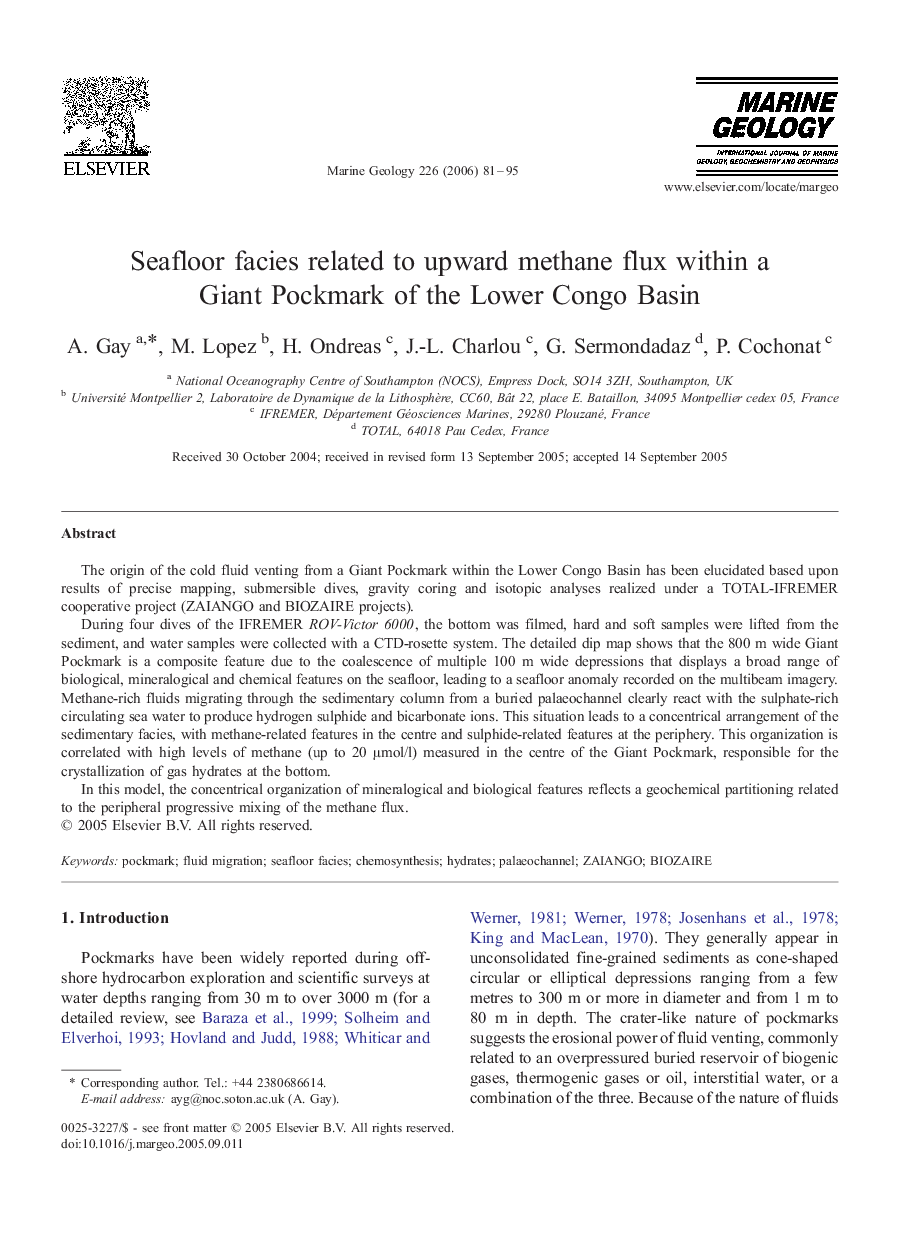| Article ID | Journal | Published Year | Pages | File Type |
|---|---|---|---|---|
| 4719752 | Marine Geology | 2006 | 15 Pages |
The origin of the cold fluid venting from a Giant Pockmark within the Lower Congo Basin has been elucidated based upon results of precise mapping, submersible dives, gravity coring and isotopic analyses realized under a TOTAL-IFREMER cooperative project (ZAIANGO and BIOZAIRE projects).During four dives of the IFREMER ROV-Victor 6000, the bottom was filmed, hard and soft samples were lifted from the sediment, and water samples were collected with a CTD-rosette system. The detailed dip map shows that the 800 m wide Giant Pockmark is a composite feature due to the coalescence of multiple 100 m wide depressions that displays a broad range of biological, mineralogical and chemical features on the seafloor, leading to a seafloor anomaly recorded on the multibeam imagery. Methane-rich fluids migrating through the sedimentary column from a buried palaeochannel clearly react with the sulphate-rich circulating sea water to produce hydrogen sulphide and bicarbonate ions. This situation leads to a concentrical arrangement of the sedimentary facies, with methane-related features in the centre and sulphide-related features at the periphery. This organization is correlated with high levels of methane (up to 20 μmol/l) measured in the centre of the Giant Pockmark, responsible for the crystallization of gas hydrates at the bottom.In this model, the concentrical organization of mineralogical and biological features reflects a geochemical partitioning related to the peripheral progressive mixing of the methane flux.
